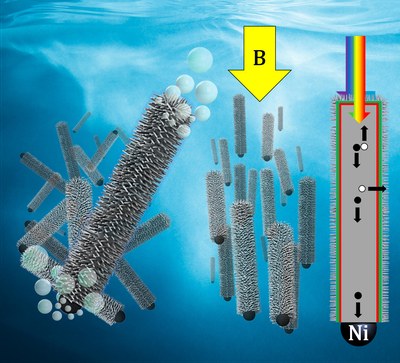Photoelectrochemical Water-Splitting
Artificial Photosynthesis - incorporating semiconductor photoelectrodes with co-catalysts directly immersed in water for solar-driven electrolysis, has promise as a technology that can produce clean hydrogen fuel more cost-effectively than electrolyzers coupled with photovoltaics.
 Direct conversion of solar energy to chemical fuels such as hydrogen is a very promising route to the energy-dense storage of this abundant but intermittent renewable resource. The ultimate goal is to produce an integrated semiconductor/catalyst system that can produce hydrogen and oxygen from water at high efficiency and stability under visible light. Research at the Conn Center is pursuing a novel tandem structure semiconductor particle reactor system and exploring mesoscale phenomena to maximize the performance of a particulate slurry for solar water-splitting.
Direct conversion of solar energy to chemical fuels such as hydrogen is a very promising route to the energy-dense storage of this abundant but intermittent renewable resource. The ultimate goal is to produce an integrated semiconductor/catalyst system that can produce hydrogen and oxygen from water at high efficiency and stability under visible light. Research at the Conn Center is pursuing a novel tandem structure semiconductor particle reactor system and exploring mesoscale phenomena to maximize the performance of a particulate slurry for solar water-splitting.
